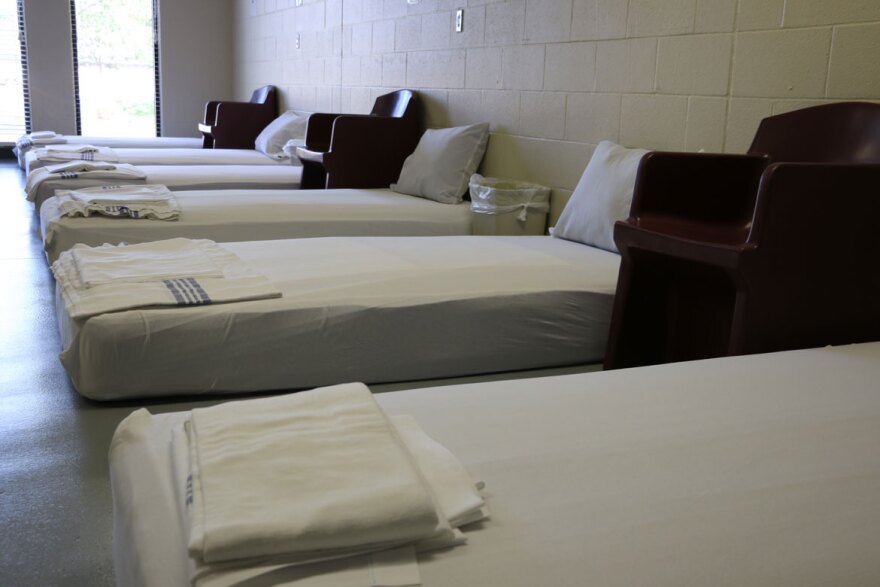Representatives from a broad spectrum of agencies and organizations, including hospitals and courts, are crystallizing plans they hope will help solve a health problem in Kansas City, Mo.
The issue is that people who are high, drunk or in psychiatric crisis clog emergency rooms and tie up first-responders with needs more suited to mental health intervention, according to organizers.
(Nearly half of Kansas City municipal jail inmates report mental health problems, according to a new survey out this month.)
Two work groups tackling the problem tentatively have set July 10 as the day for a local summit of as many as 80 participants to devise a test for a new approach.
Planners hope to use about $3.5 million in state funds for a pilot that, they say, is included in the fiscal 2015 budget pending before Missouri Gov. Jay Nixon.
The hope is that the pilot will lead to the long-term solution of establishing a permanent facility staffed by personnel who can address mental health crises and then connect patients with community-based services. One aim is to assist police officers and ambulance personnel, much like the reconstituted Rainbow Mental Health Facility in Kansas City, Kan.
A potential joint effort by the work groups coalesced earlier this year.
Ideas
Among the ideas that are emerging for a crisis stabilization center in Kansas City and for related services that would also help the target population, according to participants in the ongoing discussions:
● The facility should include medical capabilities to handle minor injuries and to treat patients with dangerously high blood-alcohol content levels.
● The facility should have a short-term unit for people who need to sober up.
● Long-term housing is a critical part of the mix.
● More police forces in the region should adopt a strategy of having some officers specially trained to handle mental health crises.
● Hospitals around the region should try and track the so-called “frequent flyers,” or people who show up often in emergency rooms.
Kansas City Municipal Judge Joseph Locascio says the key is providing emergency personnel a central point where they can take people who appear to be suffering from a mental illness or substance abuse issue. Then, he says, mental health professionals can figure out the next step.
“You don’t ask the police to make these decisions on the street,” he says.
Locascio, who presides over Kansas City Municipal Court and its specialty docket for substance abusers, leads an ad hoc committee focused on addressing the need on the Missouri side of the metropolitan area.
Michael Dunaway is leading a bi-state work group focused largely on the emergency room issue. Dunaway, senior vice president of the Kansas City Metropolitan Healthcare Council, which includes about 45 hospitals throughout the region, says hospitals have needed more time to study the crisis-stabilization issue.
Now, he says, “We are fully prepared to roll up our sleeves to help make this a collaborative initiative.”
Still unknown is where a permanent facility might be located and who would cover operation costs.
Dunaway says financial contributions from the various organizations interested in the services would likely cover the costs of running the facility.
He says he is confident the parties can find a better way to serve this population.
“We will come up with a solution for this,” he says.
Dunaway and others also say they are paying attention to how things shape up at the Rainbow facility, which reopened April 7 through a partnership between area mental health centers and a substance-abuse-assistance organization.
Looking to Rainbow
State officials closed all but six of Rainbow’s beds in 2011 after federal surveyors cited the hospital for being understaffed and the state fire marshal found safety violations.
The facility has three units, each with a 10-person capacity: a sobering unit for stays of up to six hours, a crisis-observation unit for stays up to 23 hours and a crisis-stabilization unit for stays of up to 10 days.
The center is designed so patients can flow between the units as needed, such as moving from the sobering area into the crisis observation unit.
Figures provided by the facility show that, through mid-day Monday, it had logged about 100 patient visits, including 13 people treated in the crisis-stabilization unit.
Roughly 60 percent of the patients came via law enforcement personnel. Officials say other intake avenues include friends, family and referrals from other agencies.
The big difference between the old Rainbow and the new Rainbow, staffers say, is that the facility reopened as an outpatient center where consumers have a choice whether to stay or not.
Staff say some former patients now seek treatment on their own and behave better because it’s not being forced on them.
“This is a different option for those individuals that just don’t fit in the state hospital equation,” says Executive Director Sharon Sawyer.
She says census figures are increasing by the week as word gets out the facility is available. The gradual increase is good, Sawyer says, since it’s allowing them to work out the kinks as they go along.
Her advice to the advocates on the Missouri side is to expect the unexpected, if and when they open a facility.
“You think you can anticipate everything,” Sawyer says, “but you just can’t.”
Mike Sherry is health reporter for the Hale Center for Journalism at KCPT.



